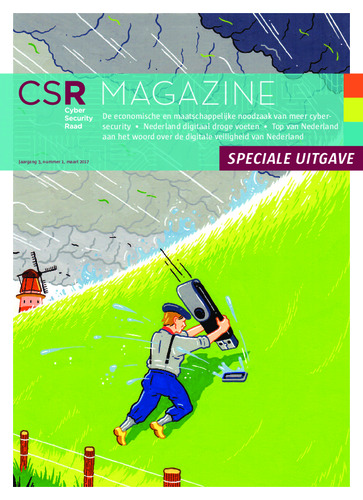- Home >
- Services >
- Access to Knowledge >
- Trend Monitor >
- Source of threat >
- Trend snippet: Water management as a (cyber)security issue
Trends in Security Information
The HSD Trendmonitor is designed to provide access to relevant content on various subjects in the safety and security domain, to identify relevant developments and to connect knowledge and organisations. The safety and security domain encompasses a vast number of subjects. Four relevant taxonomies (type of threat or opportunity, victim, source of threat and domain of application) have been constructed in order to visualize all of these subjects. The taxonomies and related category descriptions have been carefully composed according to other taxonomies, European and international standards and our own expertise.
In order to identify safety and security related trends, relevant reports and HSD news articles are continuously scanned, analysed and classified by hand according to the four taxonomies. This results in a wide array of observations, which we call ‘Trend Snippets’. Multiple Trend Snippets combined can provide insights into safety and security trends. The size of the circles shows the relative weight of the topic, the filters can be used to further select the most relevant content for you. If you have an addition, question or remark, drop us a line at info@securitydelta.nl.
visible on larger screens only
Please expand your browser window.
Or enjoy this interactive application on your desktop or laptop.
Water management as a (cyber)security issue
Cybersecurity remains a complicated issue ‘One interesting case for a country like the Netherlands is the issue of water security, a theme that brings together two separate security debates,’ Visser continues. ‘We in the Netherlands have been working to protect ourselves from waterrelated threats for centuries: it's a traditional and typically Dutch security topic. Today, these efforts are being combined with a cyberrelated aspect. The question before us is, how to best unite the traditional and modern worlds? Many of our water management structures were built in the 1950s, 60s and 70s, using the technology and knowledge available at that time. Each was a standalone system that was not linked to a larger network. Today, there's a desire to link the information from various water management structures, so we're not passing the same information back and forth half a dozen times. This does, however, entail increased risks in that, if you can gain access to one system, you'll have access to the others as well. So it's a matter of competing interests: we want the systems to be connected, but to avoid that degree of risk. On the one hand, we want a government that provides optimum service; and on the other, we also want a government that maintains an optimum level of security. These two aims are sometimes mutually exclusive. In such cases, whether you opt for service or security will depend on the type of service in question. The decision requires careful consideration each time with regard to the type of information and the type of security involved.’




